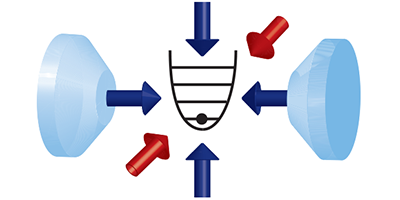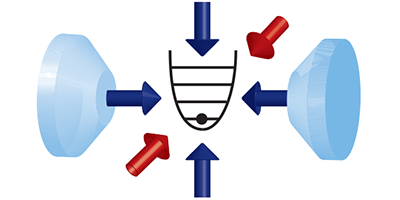Still Life with Atom
Like naturalists chasing bugs with butterfly nets, physicists seek to catch quantum systems and bottle them for study. Single atoms have long been targets of this quest, and now in a paper in Physical Review Letters, Andreas Reiserer and colleagues at Max Planck Institute of Quantum Optics, Germany, report they have managed to capture a single atom and place it inside a tiny cavity, while controlling all of its degrees of freedom.
Single atoms have been trapped in a cavity before but not with such fine control of motion and position. The authors suspended a rubidium atom in a 3D optical lattice created by interference of laser beams. Playing with the laser frequencies and shifting the resulting standing waves, the authors can control the atom’s position, tightly confining the atom into the center of a resonant optical cavity. This placement achieved the maximum coupling of the atom to the cavity photons. Using additional lasers, the researchers were also able to control the atom’s motion, cooling it to a point where its fluctuations were at a minimum (i.e., the atom was in its absolute ground state).
Controlling all the degrees of freedom of a single atom—its internal state, its position and momentum, and its coupling to light—should allow researchers to pin down conditions necessary to further optimize the interaction of atomic qubits with photons for quantum information processing. – David Voss





